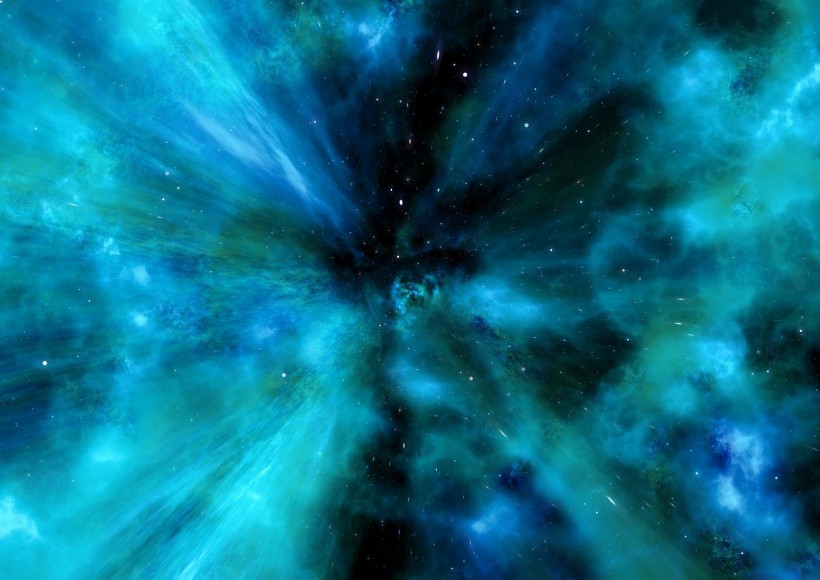The CALorimetric Electron Telescope (CALET) on the International Space Station (ISS) has detected the most energetic cosmic ray electrons, shedding light on their mysterious origins. Data from CALET since 2015, comprising over seven million particles, indicates evidence for nearby young sources of cosmic ray electrons, contributing to a comprehensive understanding of galactic processes.
The instrument's unique ability to detect electrons at the highest energies offers robust statistical analysis, supporting the conclusion of local sources for cosmic-ray electrons. Nicholas Cannady emphasizes the significance of this finding in pushing into the realm of highest energies for exploration.

Record-Breaking Cosmic Ray Electrons Offer Clues to Their Mysterious Origins in Space
CALET Unveils Cosmic Ray Electron Origins and Energetic Events
CALET, a collaborative initiative led by Shoji Toriiat the University of Waseda in Japan, has played a pivotal role in advancing the understanding of cosmic-ray electrons, with the study's findings published in Physical Review Letters.
The extensive dataset derived from the CALET has provided scientists with a substantial and robust dataset, indicating the potential presence of at least one nearby source of cosmic ray electrons and, possibly, additional sources.
Cannady, an astrophysicist from the University of Maryland Baltimore County and member of the CALET Collaboration, expresses particular enthusiasm for the observation of events at the highest energies, with some candidates surpassing 10 teraelectronvolts. For scientists, the detection of these high-energy events would serve as compelling evidence for the existence of a nearby source.
The origin of energetic cosmic rays, known for over a century, has remained a persistent mystery, comprising tiny yet powerful particles like atomic nuclei, protons, and electrons coursing through the universe at speeds near that of light.
Scientists speculate that these particles emanate from energetic sources, with supernova remnants being the most plausible explanation thus far, though other potential sources exist, such as the theoretical annihilation of dark matter.
Physicists are keen to delve into the study of these particles to unravel their origin, although the detection process is intricate. On Earth, cosmic rays interact with atmospheric atoms, producing observable particle showers rather than directly detecting the cosmic rays.
The study's results, according to Cannady, strongly support the existing paradigm regarding the origin and acceleration of high-energy electrons from supernova remnants, offering valuable insights into the dynamics of these remnants and providing a means to comprehend the galaxy and its sources more comprehensively.
READ ALSO: Cosmic Ray With Unstable Magnetic Fields Reduces Star Formations [STUDY]
Challenges in CALET Breakthrough
Differentiating between high-energy electrons and protons poses challenges due to the overwhelming number of protons arriving, making accurate analysis difficult. The researchers developed a program to distinguish particles by analyzing their breakdown when hitting the detector, as protons and electrons exhibit distinct breakdown patterns.
However, at the highest energies, the differences between protons and electrons diminish, complicating the accurate removal of protons from the data.
To overcome this, Cannady and the CALET team simulated the breakdown patterns of protons and electrons from the precise direction of high-energy events, enhancing the ability to identify electrons accurately. Sufficient presumed electrons remained in the dataset after careful analysis, confirming a real signal.
T. Gregory Guzik, the U.S. CALET collaboration lead, said that the telescope offers the possibility of measuring material from a specific nearby supernova remnant on Earth and provide valuable insights into the origin and transport of relativistic matter in the galaxy. Cannady underscores the importance of detecting candidates above 10 TeV as potential clear evidence of a nearby source, aligning with CALET's primary objective.
RELATED ARTICLE: Galactic Cosmic Rays Explained: Mysteries of How Heavy Elements Accelerate Revealed
Check out more news and information on Space in Science Times.

![Extinct Giant Salmon Had Tusk-Like Spikes Protruding Out of Its Snout That Can Easily Kill Shark, Other Large Marine Animals [Study]](https://1721181113.rsc.cdn77.org/data/thumbs/full/53304/89/56/50/40/extinct-giant-salmon-had-tusk-like-spikes-protruding-out-of-its-snout-that-can-easily-kill-shark-other-large-marine-animals-study.png)












